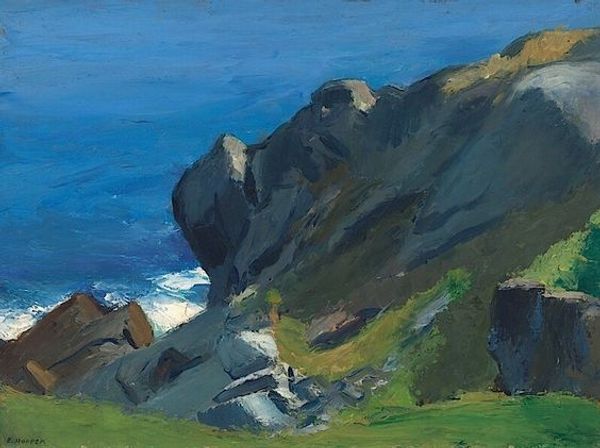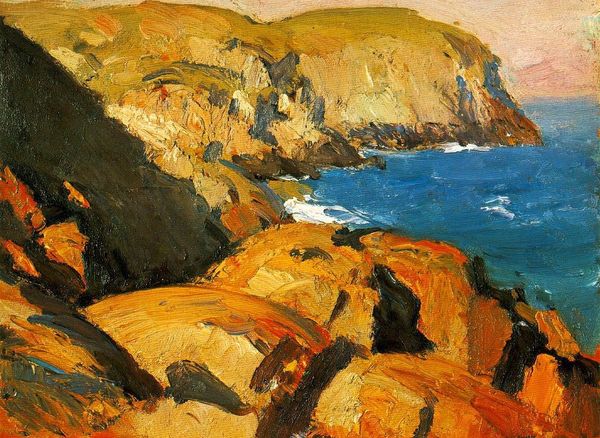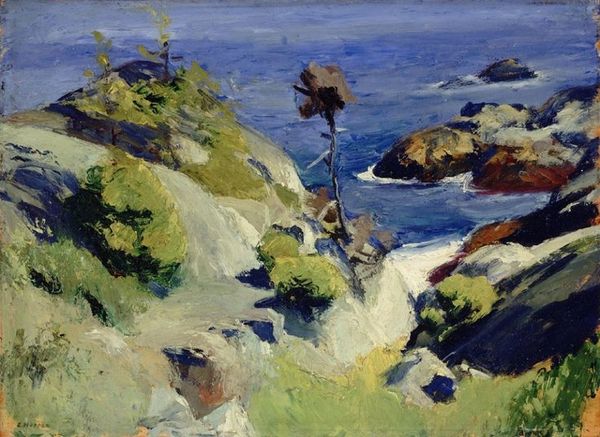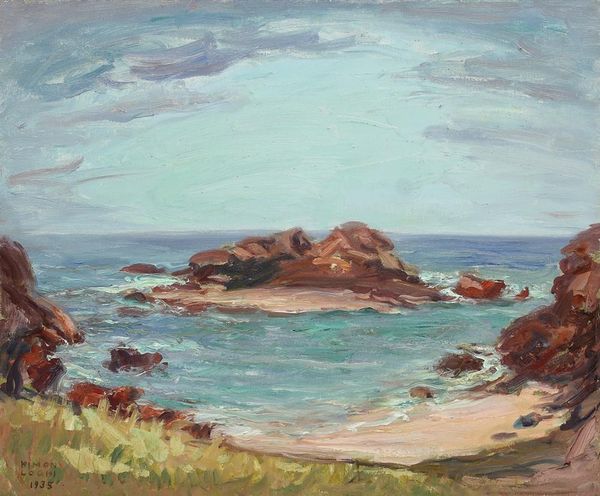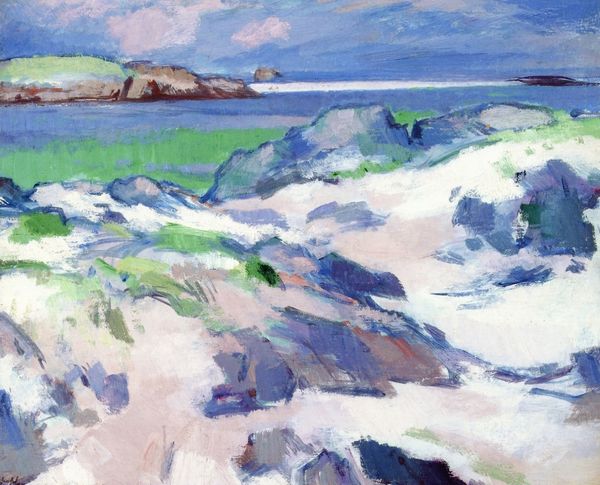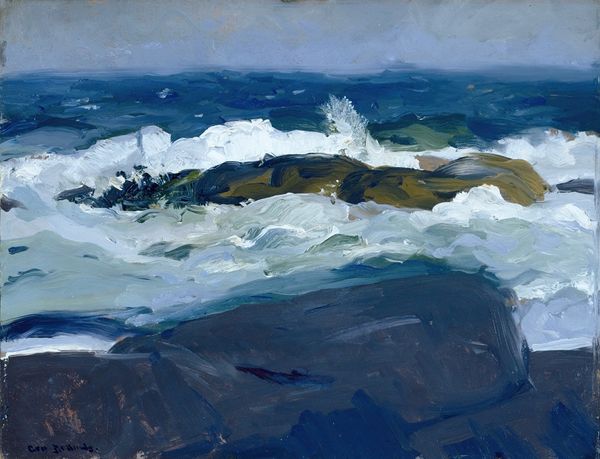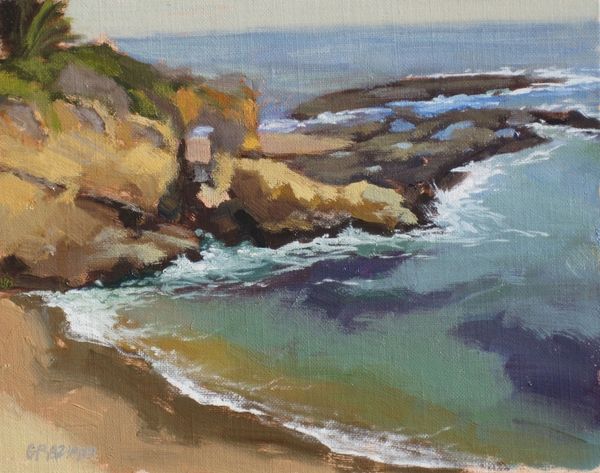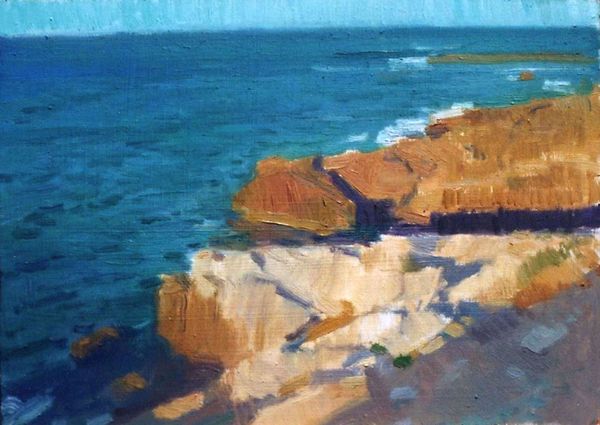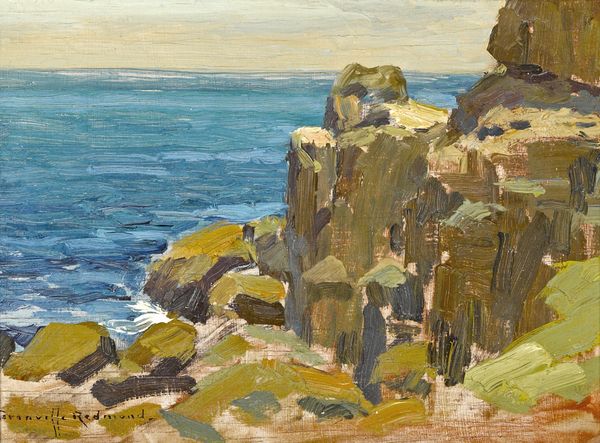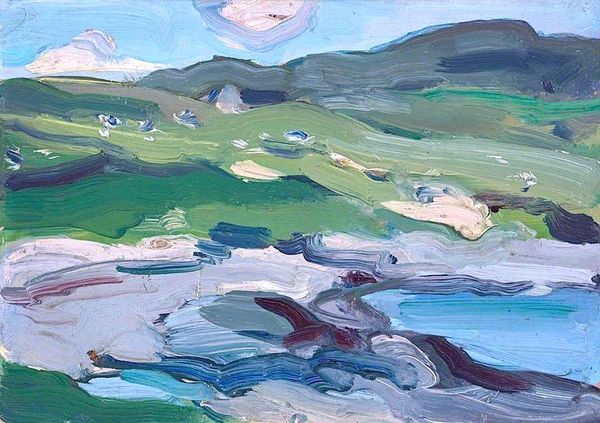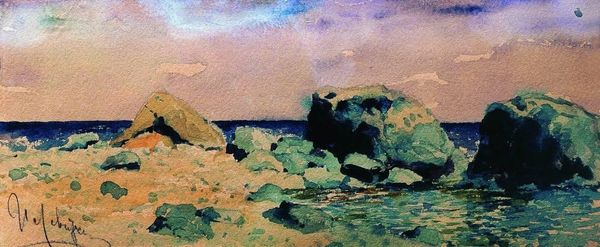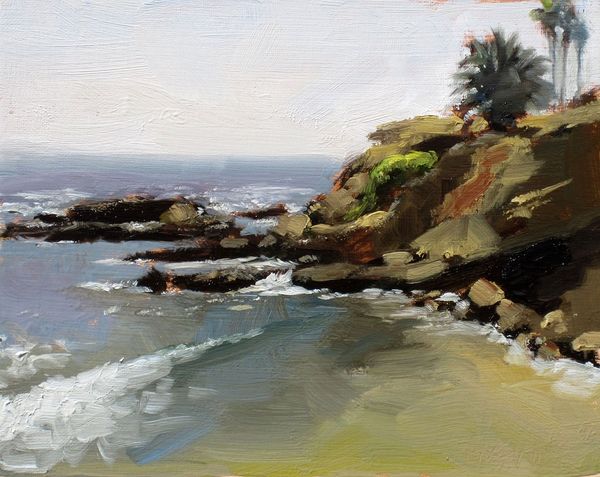
painting, oil-paint
#
painting
#
oil-paint
#
landscape
#
oil painting
#
ocean
#
rock
#
seascape
#
modernism
#
realism
#
sea
Dimensions: 24 x 33 cm
Copyright: Public domain US
Curator: Hopper's "Rocky Shore," from 1919, captivates me with its sheer, unadorned presence. It’s an oil painting currently residing here at the Whitney, offering a glimpse into his early explorations of American landscapes. What's your initial impression? Editor: Stark. Stripped back to essentials. It's raw, almost unfinished in its directness. The colours, particularly the blues and grays, feel like a northern climate, cool and untamed. I'm curious about this moment within his broader career; was Hopper actively engaging with social issues, or was this pure landscape? Curator: Interestingly, Hopper completed it relatively early in his career. While social realism is a hallmark of his mature work, this piece shows him grappling with formal aspects of painting, light, and structure. You notice, however, the recurring symbol of the solid rock mass which can often represent resilience in the face of modernity. Editor: But what's striking here is the contrast. The heavy, dark rock is so weighty against the dynamism of the ocean and the rather delicate sky. Is this a statement on permanence versus ephemerality? Or perhaps a commentary on the stability sought versus the constant flux in American life after the war? Curator: It resonates on both levels. The rock becomes this emblem of enduring nature, while the sea, in its constant motion, mirrors life's unpredictable currents. Considering Hopper’s later fixation with architectural forms as stand-ins for human presence, it seems possible to suggest these rocks as primal building blocks or primordial guardians. Editor: Absolutely. Hopper often uses stark landscapes to evoke psychological states. Here, the subdued palette seems almost melancholy. Perhaps a visual expression of a sense of post-war uncertainty. Knowing the wider sociopolitical context provides richer readings for those colours. The heavy shadowing speaks to times of societal shadows. Curator: Precisely! "Rocky Shore," though seemingly straightforward, embodies many complexities. It's a study in contrasts, an emblem of resilience, and a reflective canvas capturing the American spirit in transition. Editor: Well said. It really shows how early works sometimes encapsulate essential characteristics of what becomes their more known style and messaging. Food for thought when considering artists evolution and how artistic messaging evolves within shifting social currents.
Comments
No comments
Be the first to comment and join the conversation on the ultimate creative platform.
